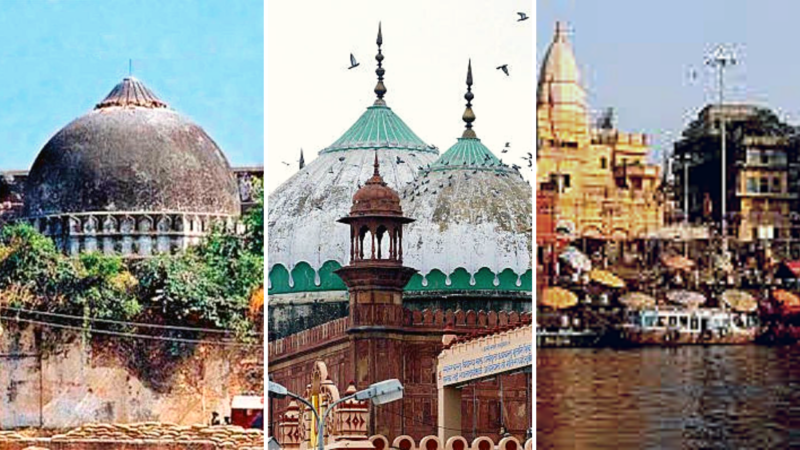Sabka saath, sabka vikas. Sabka prayas. Vikas and Virasat. Such are among the tenets of Prime Minister Narendra Modi, and they serve as guideposts for a better future for the nation, a better future than so much of the past has been. In a similar unifying manner, RSS Sarsanghchalak Dr Mohan Bhagwat pointed out that the cultural and historical DNA of Hindus, Muslims, Christians and citizens belonging to other faiths is a single chord formed through the intertwining and unifying of many different strands. We are the Union of India, not the Federation of India in the way some politicians claim the country to be. The unity of our peoples is key to national success. In such a context, those interested in the success of the project of building the world’s third superpower need to introspect. In particular, they need to dwell on the perils of attempting to cross realistic limits in their words and actions.
Crossing such limits may slow down the attainment of the essential, which would get sacrificed at the altar of reaching out for the impossible. Bharat i.e. India is a country of multiple faiths, some of the greatest of which were born within the country. Sikhism, Jainism and Buddhism are examples, as also the universal faith of Sanatan Dharma, a faith that embraces all who share a mindset affirming the common sisterhood and brotherhood of the entirety of humanity. Sanatan Dharma rejects exclusion and hate, for both are tendencies that destroy. In contrast, the principles of harmony and mutual understanding assist in the creation of an increasingly prosperous and stable society. Sanatan Dharma knows no boundaries, and shuns the narrow confines of thought of those who believe in exclusion on the grounds of faith. Such a division in the past assisted the British Raj in creating the now crumbling state called Pakistan in 1947 out of Bharat i.e. India. It is a fact that our country went through several periods of turmoil and conquest during a recorded history that stretches back several thousands of years. Each such phase left its own imprint, just as the experiences of childhood and youth influence the period of adulthood of a human being. The emphasis has to be on a better future rather than a return to the feuds of the past. The Prana Pratishta of the Ram Mandir after it was destroyed by Emperor Aurangzeb in 1660 was a solemn occasion which was marked by an atmosphere of goodwill that stretched across all communities. Kashi, Mathura and Ayodhya are the three sacred sites of the Hindus, hence it would be equally fitting were the remaining two to return to the way they were before Aurangzeb cast his hate-filled exclusivist, supremacist eyes on them. For three decades and more, the present writer has spoken to friends in the Muslim community about the return of the three sacred sites, and once their significance to Hindus was understood, their reaction was almost always supportive and understanding.
All of a sudden, now that the Ram Mandir has come up after a gap of five centuries, social media has been clogged with messages that not two but a further 39,999 mosques need to be converted into temples. The risk of putting on steroids such an expansive claim had been used since the British period to prevent any of the three sacred places from reverting to what each was before the depredations of Aurangzeb. Each of the three remained in the same condition that they were in during the reign of Aurangzeb, until Prime Minister Modi worked hard to ensure the peaceful return of the Ram Mandir to its original state. The Muslim community joined with their Hindu brothers and sisters in witnessing and in the case of many, welcoming such a transformation. Were the impression to spread that not just two more but 39,999 places of worship were to be affected, the path towards peacefully and amicably retrieving the sites of the original Kashi Vishwanath temple and the birthplace of Lord Krishna would narrow down sharply. Those outside interests that are interested in stoking perpetual communal tension in India would be delighted were demands to be made that go beyond the three sacred sites in targeting more. For a future where justice is done to a billion people in a context where there is societal peace and stability, only Kashi, Mathura and Ayodhya, the three holy sites of the Hindu community, need to return to what they were before the era of Aurangzeb. Such a return needs to be carried out in the same peaceful manner as happened with the Ram Mandir. It would harm such a process, were it not to be clear that only the return of the three is sought, and not more. The birthplaces of Lord Ram and Lord Krishna are not substitutable, nor is the location of the original Kashi Vishwanath temple, which is why the three are on an entirely different plane from others. They are for Hindus the way the Vatican is for Catholics, and Mecca and Medina are for the Muslim community. Mixing efforts for their peaceful return with demands that other locations too follow suit will be to cross a Lakshman Rekha. Each of us must avoid doing that, to ensure that what took place in Ayodhya gets repeated in Mathura and Kashi, which is their return in a harmonious manner that affirms the unity of citizens of Bharat, i.e. India.

